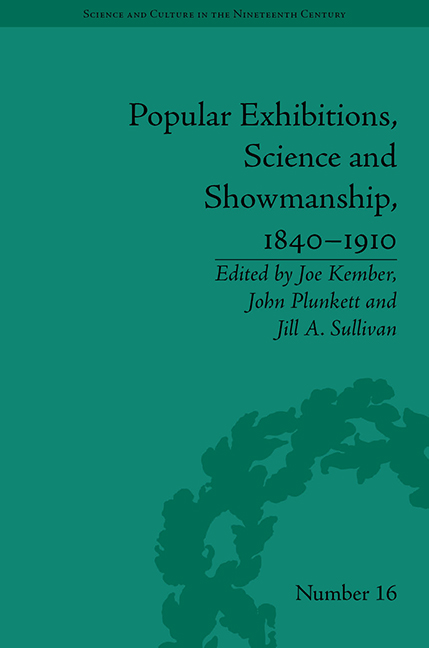Book contents
- Frontmatter
- CONTENTS
- Acknowledgements
- List of Contributors
- List of Figures and Tables
- Introduction
- Part I Science and Spectacle
- Part II Word and Image
- Part III Staging Knowledge
- 7 The Talking Fish: Performance and Delusion in the Victorian Exhibition
- 8 Representation, Race and the Zoological Real in the Great Gorilla Controversy of 1861
- 9 On Wonder: Situating the Spectacle in Spiritualism and Performance Magic
- Part IV The Politics of Display
- Notes
- Index
7 - The Talking Fish: Performance and Delusion in the Victorian Exhibition
from Part III - Staging Knowledge
- Frontmatter
- CONTENTS
- Acknowledgements
- List of Contributors
- List of Figures and Tables
- Introduction
- Part I Science and Spectacle
- Part II Word and Image
- Part III Staging Knowledge
- 7 The Talking Fish: Performance and Delusion in the Victorian Exhibition
- 8 Representation, Race and the Zoological Real in the Great Gorilla Controversy of 1861
- 9 On Wonder: Situating the Spectacle in Spiritualism and Performance Magic
- Part IV The Politics of Display
- Notes
- Index
Summary
Having been caught ‘at great personal hazard’ five years earlier off the coast of Africa, The Talking Fish arrived in Liverpool in early 1859 and was exhibited throughout January. In February it appeared in Manchester and by the 5 May 1859, The Talking and Performing Fish was on show at No. 191 Piccadilly, London. Its appearance was received with a mixture of great excitement, curiosity and amused scepticism, attracting large audiences and much attention in the press. The Fish was twelve feet in length, weighing eight hundredweights, with two rows of teeth, its body covered with fine hair, but its most striking feature was its ability to articulate the English words ‘Mama’, ‘Papa’ and ‘John’ (the name of its keeper). Although ‘ferocious and dangerous to its enemy’, it would kiss the face and hands of its owner, allowing itself to be viewed at close proximity and to be stroked by its astonished public. Soon after its initial appearance in Piccadilly, The Talking Fish began to develop a presence within other popular entertainments. At the Adelphi Theatre in London, the Fish became the subject of a comic play, and it was swiftly parodied and characterized as a vehicle for topical and political simile both in pantomime and in the satirical press. Indeed, the meaning of the Fish's short performing life was largely created through the plethora of playbills, press advertisements and reviews, satirical articles and illustrations.
- Type
- Chapter
- Information
- Popular Exhibitions, Science and Showmanship, 1840–1910 , pp. 133 - 152Publisher: Pickering & ChattoFirst published in: 2014



